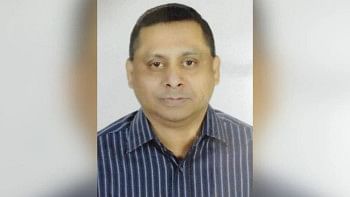Over 4sq km area to subside up to 2m
About 4.2 square kilometre-area of the underground Barapukuria coal mine site will subside by up to two metres in the mine's 30 year-life, says a highly placed Petrobangla source.
Such a subsidence will create a large lake, the source pointed out.
Residents of three to four villages adjacent to the mine, which are not densely populated like most villages in the country, will eventually have to be relocated.
Though land subsidence is a natural consequence of underground mining, the issue was omitted in the planning and approval of the mining project in the early nineties under Khaleda Zia's rule.
As a result, the project does not have any budget to address environmental and relocation issues. Consequently, the Barapukuria Coal Mine Company Ltd (BCMCL) has not compensated the affected people or relocated any village, and now increasingly facing criticism from the locals.
If the project had funds for addressing these issues, such subsidence would not have been a critical problem, the source noted.
The underground mine's design will allow the authorities to extract coal up to at least 2035 and tap around 30 million tonnes. But the mine has a proven reserve of 389 million tonnes of coal at a depth of 120 metres to 450 metres.
This mine was suitable for open cast coal mining, which is a method opposed by a section of intellectuals and activists as it destroys arable land and necessitates relocation of communities. In open cast method, widely applied in Indian mines including those in West Bengal, it is possible to extract more than 90 percent of the 389 million-tonne reserve.
The central mining area spreads around a three square kilometre area. The entire area will gradually subside. “Besides, 40 percent additional area will also subside. In total, the present mine design dictates a subsidence area of 4.2 sqkm area,” the source said.
The mine has on an average, a very thick 36-metre coal seam. According to its underground mining design, the mining company is slicing out three- metre thick coal seams. “For each such slicing, the land subsidence would eventually be two metres,” he noted.
Though it is not a densely populated area, the area adjacent to the mine has a school, madrasa and power lines which should be relocated soon.
Land subsidence in the mining area was first reported in 2006. In addition, an improper sub-soil water extraction plan has dried up the common water reservoirs for around 15 adjacent villages. Further, the mine is releasing environmentally hazardous water through canals which is affecting farming in the area.
Mine sources said the untreated water contains poisonous phosphorous, arsenic and magnesium.
The Daily Star Saturday reported that residents of five villages near the mine were living in panic under the open sky since Wednesday night when their houses developed cracks and 300 acres of land subsided by two to three feet. At least 81 houses developed cracks in the five villages.
A source explained why environment component was ignored while designing the project. “When the project was designed, the National Economic Council rejected it initially as the Internal Rate of Return (IRR) for such an enormous scheme was only 13 percent. This was unappealing and unviable from an economic point of view. So, the energy ministry and Petrobangla eliminated various cost incurring factors like environmental or resettlement costs,” he said.
"The IRR was increased to 39 percent by including participation of Bangladesh Railway, Water Development Board (WDB) and Power Development Board (PDB) in the project. With 39 percent IRR, the project looked viable and the Executive Committee of National Economic Council (Ecnec) approved it. But neither the railway nor WDB or PDB participated in the mining project."
Such a sketchily done project design was pushed by Hosaf Group that acted as a representative of the Chinese developers in both the mining and power projects, and both the projects' consultant, IMCL.
The Barapukuria project was approved in March 1992 with the target of completing it on July 31, 2001 at a cost of Tk 887 crore under Chinese Supplier's Credit. The mine had been a financial mess from the beginning. Hosaf Group played the key role in designing the hard term credit that dictated a 10 percent down payment to the project developers to kickstart it in 1995. The first loan repayment also started only within three years of project development in 1998 when the mine was far away from completion.
The Anti-Corruption Commission last year filed a case against several bigwigs of the previous BNP government for corruption in awarding a contract for Barapukuria operation in 2003-04. Hosaf chief Moazzem Hossain is one of the accused.

 For all latest news, follow The Daily Star's Google News channel.
For all latest news, follow The Daily Star's Google News channel. 



Comments